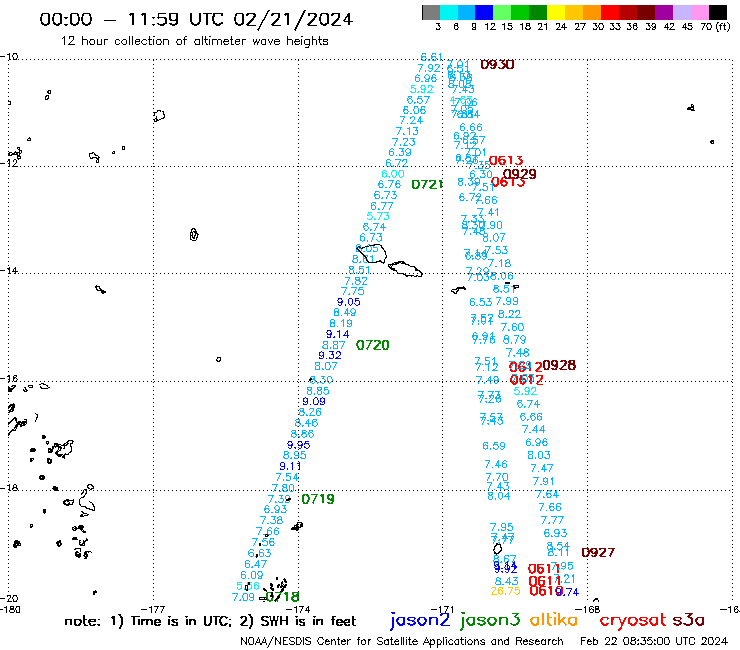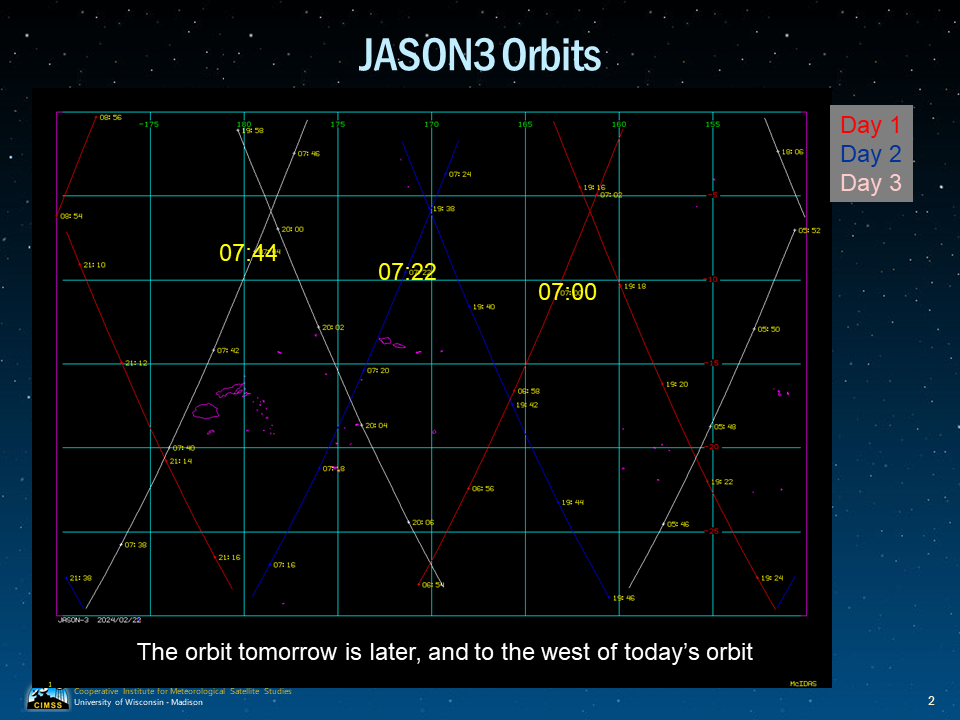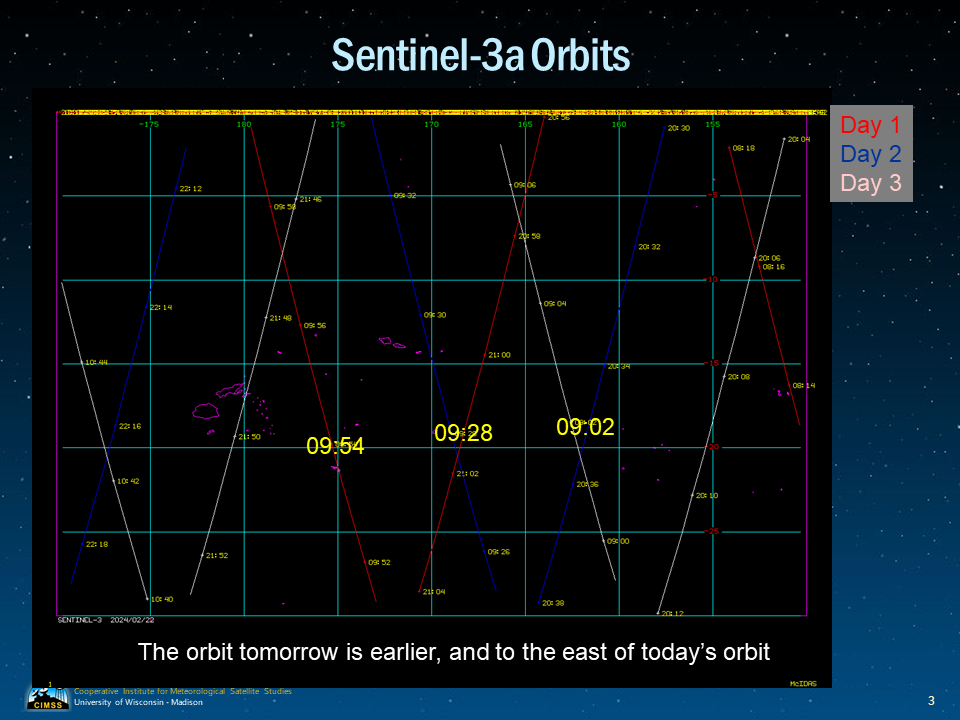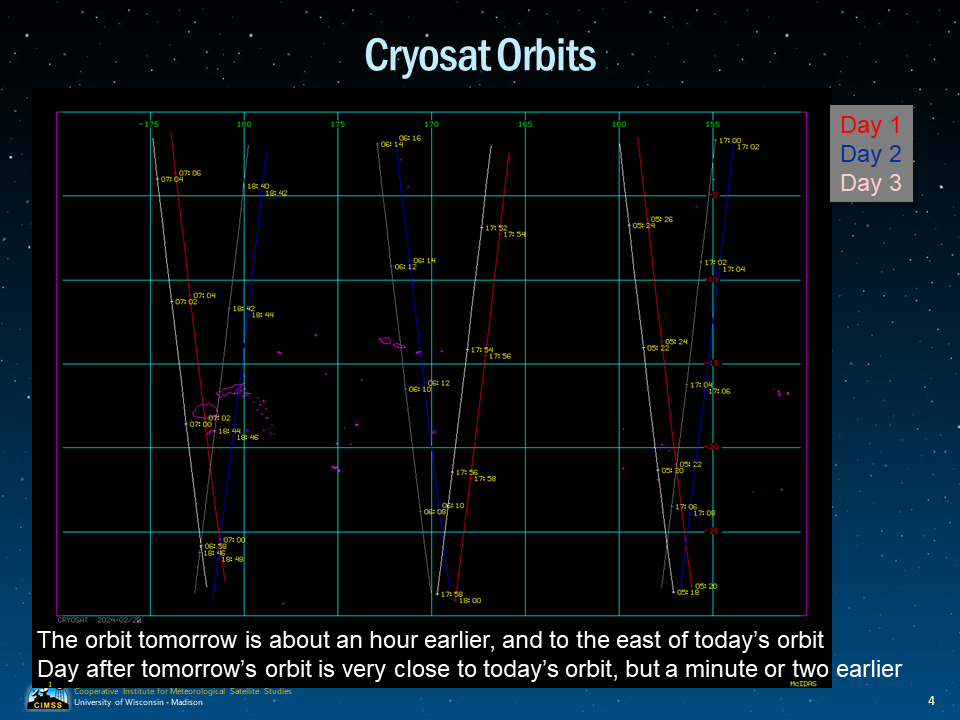How altimetry observations change from day to day

The ‘manati’ website (https://manati.star.nesdis.noaa.gov/) is a helpful NOAA/NESDIS/STAR website that includes different observations from Polar-Orbiting satellites including, as shown above, Altimetric Observations of Significant Wave Height. Observations from three different satellites are shown in the image, including Jason3 (0718-0722 UTC), Cryosat (0610-0614 UTC) and Sentinel-3A (0927-0930 UTC). This post will help you anticipate where tomorrow’s observations from these satellites will occur. In other words, if you know where the observations are today, can you guess where they will be tomorrow (or the next day?)
To answer this question, I downloaded the Two-Line-Element files (using the ‘SATCAT’ ability at celestrak.org) and used NAVDISP commands in McIDAS-X. The imagery below shows 3 consecutive days of JASON-3 orbits over the south Pacific. Based on this figure, the orbit for ‘tomorrow’ — in blue — will be later and to the west of ‘today’s orbit (in red) and the even further west and later on the day after tomorrow. (Note that ‘Day 2’ below corresponds to the Jason orbit shown above). From day to day, Jason-3 orbits cover a swath that is farther and farther west, and later in the day.

Sentinel-3A orbits evolve differently, as shown below. The Day 2 orbit is farther east and earlier than the Day 1 orbit. The blue line labeled 09:28 below is also shown in the image at the top of this blog post. From day to day, Sentinel orbits cover a swath that is farther and farther east, and earlier in the day.

Cryosat orbits are also different. The figure below shows 4 days of orbits. Comparing the two orbits ‘Today’ and ‘Tomorrow’ shows that tomorrow’s orbit is about an hour earlier than today’s and farther east. Look at the ‘Red’ orbit that moves through Fiji at 0700 UTC on Day 1; on Day 2, there is an orbit through American Samoa at 0613 UTC (as also shown in the figure up top). Note on Day 3, however, that a near-overlap of the Day 1 orbit is occurring through Fiji.

Use this information to anticipate where tomorrow’s overpass will be (or where yesterday’s overpass was!) when you’re looking at the Significant Wave Height.
—————
Free Secure Email – Transcom Sigma
Transcom Hosting
Transcom Premium Domains
